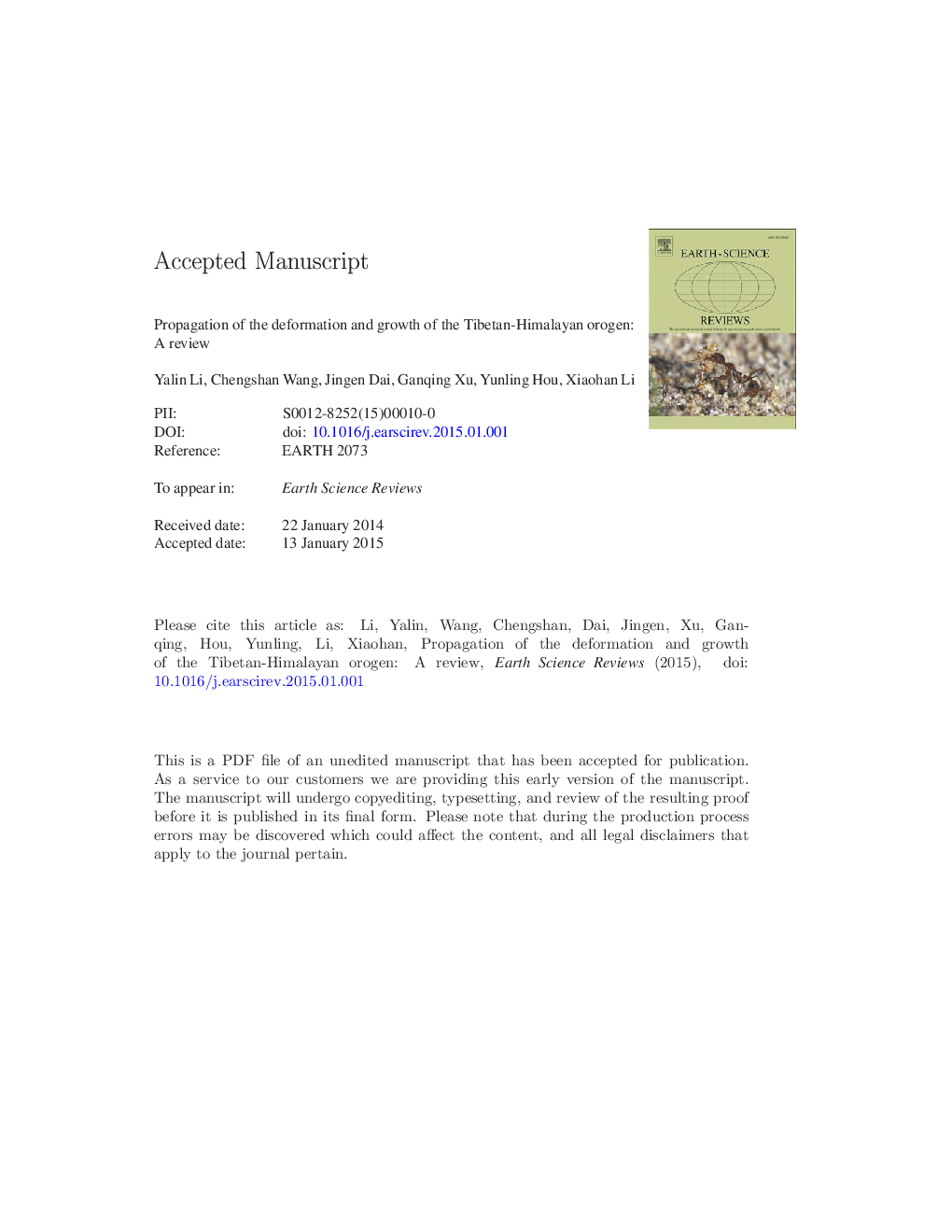| کد مقاله | کد نشریه | سال انتشار | مقاله انگلیسی | نسخه تمام متن |
|---|---|---|---|---|
| 6443031 | 1639959 | 2015 | 104 صفحه PDF | دانلود رایگان |
عنوان انگلیسی مقاله ISI
Propagation of the deformation and growth of the Tibetan-Himalayan orogen: A review
ترجمه فارسی عنوان
انتشار ضایعات و رشد گیاه تبتان-هیمالیا: بررسی
دانلود مقاله + سفارش ترجمه
دانلود مقاله ISI انگلیسی
رایگان برای ایرانیان
کلمات کلیدی
موضوعات مرتبط
مهندسی و علوم پایه
علوم زمین و سیارات
زمین شناسی
چکیده انگلیسی
Long-standing problems in the geological evolution of the Tibetan-Himalayan orogen include where the India-Asia convergence was accommodated and how the plateau grew. To clarify these problems, we review the deformations and their role in the plateau's growth. Our results show that ~Â 1630Â km of shortening occurred across the Tibetan-Himalayan orogen since ~Â 55Â Ma, with more than ~Â 1400Â km accommodated by large-scale thrust belts. These thrust belts display an outward expansion from central Tibet and couple with the surficial uplift. The development of the Tibetan plateau involved three significant steps: Primitive plateau (~Â 90-55Â Ma), Proto-plateau (~Â 55-40Â Ma), and Neoteric plateau (~Â 40-0Â Ma). Several processes have collaborated to produce the Proto-plateau, including the pre-existing Primitive plateau, the India-Asia collision, and subductions of Greater India and Songpan-Ganzi beneath the Lhasa-Qiangtang terrane. Since ~Â 40Â Ma, the Proto-plateau, which was dominated by a topographic gradient, lower crustal flow and continuous India-Asia convergence, experienced three periods of rapid outward growth (~Â 40-23, ~Â 23-10, and ~Â 10-0Â Ma) in general. The N-S trending rifts were caused by the eastward growth of the plateau dominated by thrusting and crust flow in central Tibet, while they were the results of intense N-S shortening in Himalaya.
ناشر
Database: Elsevier - ScienceDirect (ساینس دایرکت)
Journal: Earth-Science Reviews - Volume 143, April 2015, Pages 36-61
Journal: Earth-Science Reviews - Volume 143, April 2015, Pages 36-61
نویسندگان
Yalin Li, Chengshan Wang, Jingen Dai, Ganqing Xu, Yunling Hou, Xiaohan Li,
